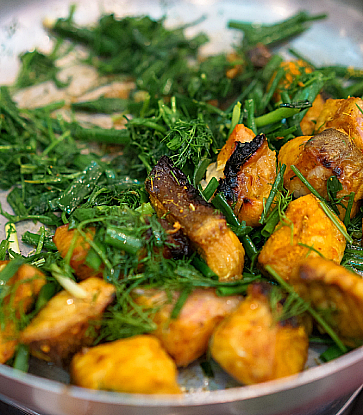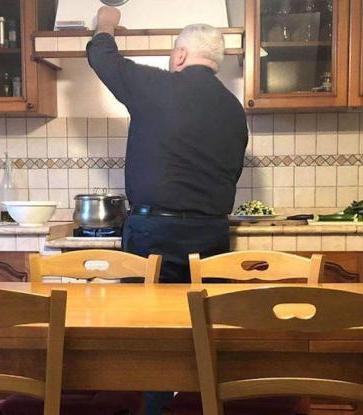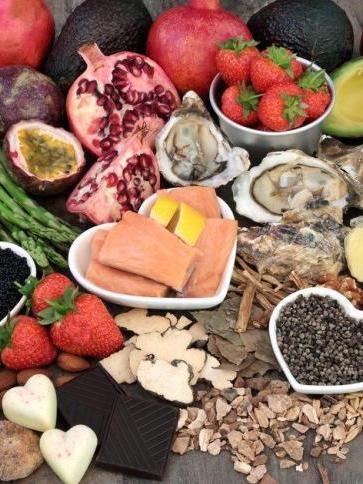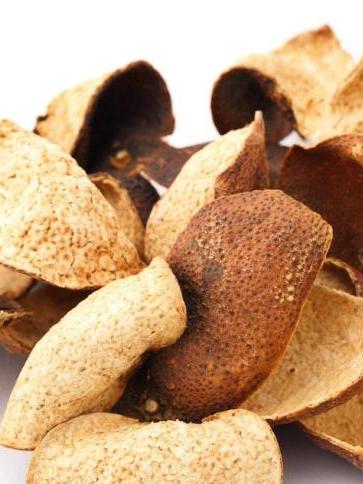After a long period of anonymity, the Basque Country made a splash in the culinary world. Its strong cooking tradition has been embraced by gourmands with great enthusiasm. Take San Sebastian, the region’s coastal capital. This resort town alone boasts 3 three-Michelin-starred restaurants.
The origin of the Basque Country dates back centuries, when residents lived off their livestock around the Pyrenees Mountain. As they moved seaward in recent times, marine activities became an integral part of Basque culture. The vessels Columbus employed for his American conquests were partly produced in the region. The terrain provided the Basque people with lavish bounties, and they certainly knew how to make use of it.

Salted cod can be found almost everywhere in the area, frequently in the form of pintxos, the Basque equivalent of tapas served on toothpicks. It even made its way to the sailing ships to the Americas, constituting a crucial part of the sailors’ diet. The alcohols made in the region are just as fine. Varieties of Txakoli and Sargadoa are wonderful matches to local dishes.
Such a captivating gastronomic tradition finds a refined expression in one Michelin-starred Nerua, led by chef Josean Alija. The restaurant is situated in Guggenheim Bilbao, the modern art sanctuary in Spain. Architect Frank Gehry especially adopted a streamlined look and metallic finish on the museum to echo the native steel and shipbuilding industries.

Indeed, the chef’s individual touch is what comes to define Basque cuisine nowadays.

“Basque cuisine is all about seasonality and locality. We’re close to our suppliers so we know everything about the ingredients. In addition to that, how the chef approaches the produce is the soul of the restaurant. It’s the language we use to convey our gastronomic vision.
While we all draw inspirations from the same tradition, we come up with original ways of interpretation. After all, one thing never changes – we stay true to the ingredients and our identity,” Alija continues.
If the kitchen is a chef’s paintbrush, the ingredients of the Basque Country are the best paint one can find on earth. “There are many ingredients unique to here, such as lágrima pea, kokotxas (the gelatinous part of cod head) and barnacle. We’ve got great waters with beautiful orchids.
"As a chef, our job is to distinguish when’s the best to use an ingredient. We adapt to the change of seasons, and my restaurant divides the years into three main seasons: spring, summer and autumn-winter. We usually research and prepare the menu for the next year during the same season. In a way, the farms, fishermen and nature decide what we make,” says Alija.

New Basque Cuisine was born under the influence of Nouvelle Cuisine in France beginning in the 1970s. A lot of thought went into revitalising traditions like pintxos using new ingredients and cooking methods.
“New Basque Cuisine strives to create an all-encompassing experience with quality food, atmosphere and service. It is a springboard for avant-garde cuisine and restaurants. These places transformed how a restaurant was run. This helped people understand molecular gastronomy and other new food cooking styles,” says Alija.
The Basque chefs’ inventive style is built on a solid foundation. Every move is justified by days and weeks of research, and it all comes down to the most basic. “Technique and knowledge to ingredients are the most valuable assets to chefs. It’s in the blood of every Basque chef to share this knowledge to the world,” notes Alija.

As said, seasonality takes priority in our kitchen. After we decide on the best produce to feature in that season, we need to forge a deep understanding of them through anthropological, historical, organoleptic, sensational perspectives. Only then we can make the most of these ingredients to prepare intriguing and healthy dishes.”
With a generous bounty of great produce, generations of experience and an adventurous spirit, Basque cuisine has a rightful spot in the upper ranks of the gastronomic world.



















